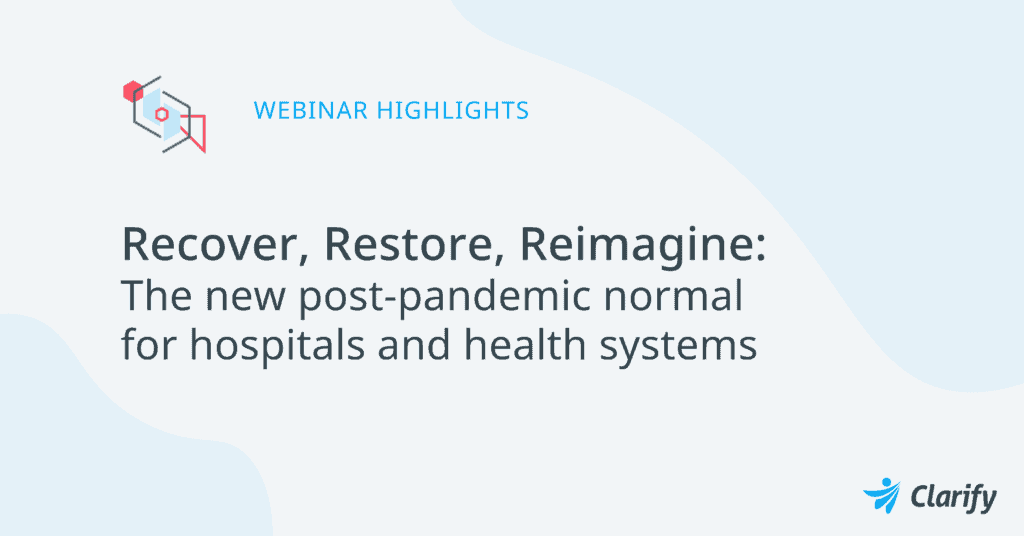
Insights for Providers
Jul 19, 2024
Insights for Providers | May 6, 2020

Amid the COVID-19 pandemic, health systems are facing shrinking revenue and declining margins. Office visits, outpatient services, and IP admissions have dramatically declined, and high-margin, elective surgeries have largely been canceled. In May, our provider strategy team hosted a webinar describing three core revenue strategies for hospitals and health systems and the ways they can adapt to the current state and prepare for the “new post-pandemic normal.”
While many of our hospitals and health systems are still experiencing an influx of patients needing treatment for COVID-19, various organizations are starting to consider their strategy for post-surge support. In this webinar, Robert Lin and Colleen Farrell share what they are hearing from our partners in terms of how they are thinking about addressing these challenges today and discuss three core revenue strategies providers should consider moving forward.
~30% decline in ER visits and PCP visits; ~60% decline in specialty office visits as patients are deferring care or using telehealth services
~40% decline in inpatient surgical volume; ~60% decline in outpatient and ASC volume as elective surgeries are being canceled or postponed
Rising costs as the ICUs continue to be overwhelmed, both in terms of the number of patients, but also in the extended stays that are a result of COVID.
Health systems are seeing new patients enter their doors, whether through emergency room care or new access via virtual visits.
These dramatic shifts are driving revenue declines of 40 to 60% and margin compression from 6% to 8% for hospitals and health systems.
With this decline in revenue, providers are understandably thinking about how to come out on the other side. One of our hospital partners recommends a phased approach to making it through to the new normal. The first step is to recover. In this phase, providers should be thinking through solutions designed to address near term cash pressures and liquidity concerns. For example, working with FEMA to get some immediate relief. The second phase is to restore. Organizations should consider solutions designed to help their hospital or health system get back on their feet, tactics like getting elected patients back on the surgery schedule, increasing clinic volume, staffing. Finally, providers can begin thinking about how to reimagine care and operations in this new context.
With this in mind, Colleen and Robert shared three strategies to help hospitals and health restore, recover, and reimagine as they enter a new provider landscape.
Find actionable opportunities to reduce leakage and drive volume within the system.
Identify physician alignment and affiliation opportunities with local providers under financial strain
Understand patient flows and longitudinal care journeys to create longer-lasting relationships with both new and existing patients
To learn about these strategies in more detail, you can watch the full webinar on-demand, or contact us directly at [email protected].
In the same swiftness with which heath systems paused non-urgent care services due to COVID-19, they now need to stand them back up. Leading health systems, in some of the hardest-hit areas, are using Clarify Referrals to bring patient volume back. It delivers high fidelity insight into the prioritization of physicians for engagement and affiliation. Learn more about our healthcare analytics platform here.
Last updated: March 2020